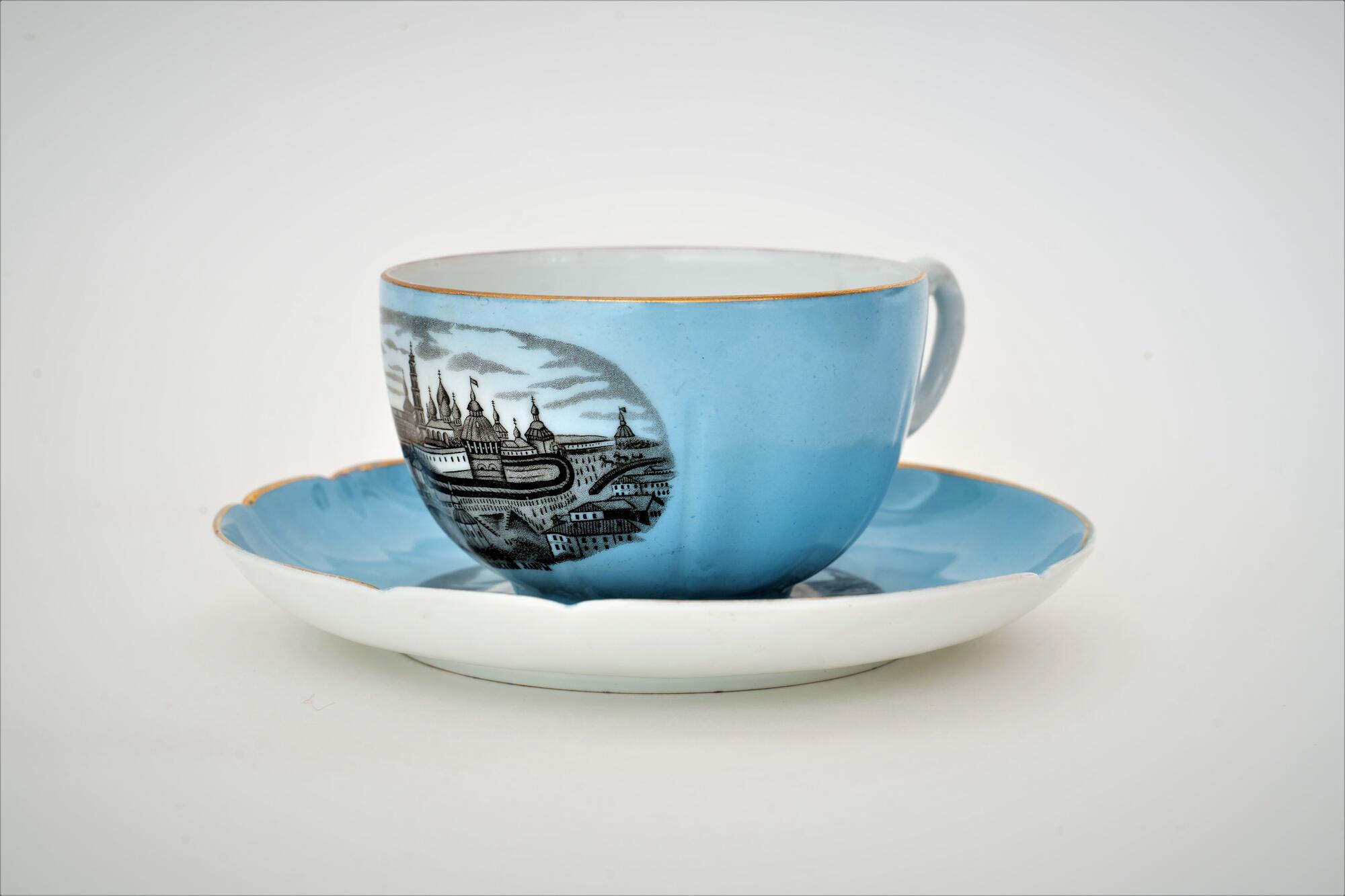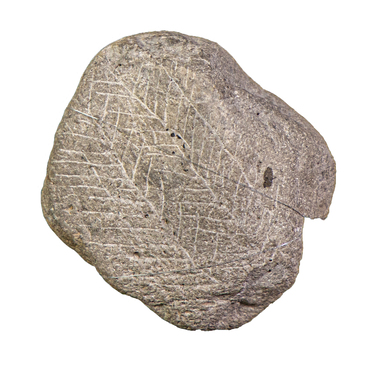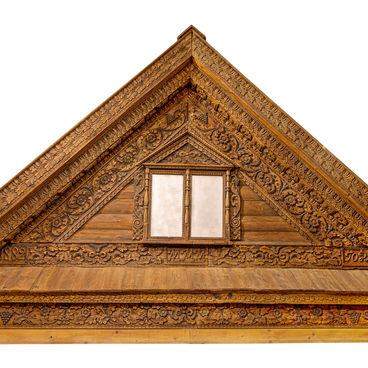The porcelain tea cup and saucer are presented in the exhibition “At the Trinity in Sergiev Posad”. On the body of the cup and on the saucer, one can see an oval-shaped stamp with a graphic pattern in black and white with a view of the Trinity Lavra of St. Sergius and a font inscription “The View of the Trinity Lavra of St. Sergius”.
The drawings show a view of the monastery from the hill, where travelers stopped to have some Trinity pancakes, after which this area was nicknamed Blinnaya (Pancake) Hill. From this spot, one could see the fortified wall with powerful towers, the Refectory Church with the Church of St. Sergius, the belltower, and the Assumption Cathedral. The Pyatnitsky Well, the Pyatnitskaya Church and the Church of the Presentation of the Blessed Virgin Mary are depicted in the foreground. They were the first to meet pilgrims heading to the monastery.
After attending the service and praying in the churches, the pilgrims went to the tavern to drink tea. Dishes with views of the Trinity Lavra of St. Sergius were very popular souvenirs. The Museum-Reserve houses a kettle, a soup tureen, a plate decorated with drawings with views of the Lavra.
The tea mug and saucer set belonged to the famous Remizov family from Sergiev Posad, who owned trading establishments in the town and its surroundings. In the town of Zimnyak, 30 kilometers from Sergiev Posad, Remizov owned an inn and a tavern on the banks of the Dubna River. Travelers often came to Zimnyak, which had a watermill and a cloth factory that produced its own items. In addition, fairs were held and trade agreements were concluded there.
Carts with visitors hurried to Alexey Remizov’s inn, famous for its hospitality. Writer Mikhail Prishvin also stayed there. He lived in Zagorsk from 1926 to 1937, hunted in the local area and described its nature and people in his works and diaries. In the story “Cranes’ Homeland”, Prishvin described Alexey Remizov the following way:
The drawings show a view of the monastery from the hill, where travelers stopped to have some Trinity pancakes, after which this area was nicknamed Blinnaya (Pancake) Hill. From this spot, one could see the fortified wall with powerful towers, the Refectory Church with the Church of St. Sergius, the belltower, and the Assumption Cathedral. The Pyatnitsky Well, the Pyatnitskaya Church and the Church of the Presentation of the Blessed Virgin Mary are depicted in the foreground. They were the first to meet pilgrims heading to the monastery.
After attending the service and praying in the churches, the pilgrims went to the tavern to drink tea. Dishes with views of the Trinity Lavra of St. Sergius were very popular souvenirs. The Museum-Reserve houses a kettle, a soup tureen, a plate decorated with drawings with views of the Lavra.
The tea mug and saucer set belonged to the famous Remizov family from Sergiev Posad, who owned trading establishments in the town and its surroundings. In the town of Zimnyak, 30 kilometers from Sergiev Posad, Remizov owned an inn and a tavern on the banks of the Dubna River. Travelers often came to Zimnyak, which had a watermill and a cloth factory that produced its own items. In addition, fairs were held and trade agreements were concluded there.
Carts with visitors hurried to Alexey Remizov’s inn, famous for its hospitality. Writer Mikhail Prishvin also stayed there. He lived in Zagorsk from 1926 to 1937, hunted in the local area and described its nature and people in his works and diaries. In the story “Cranes’ Homeland”, Prishvin described Alexey Remizov the following way:



